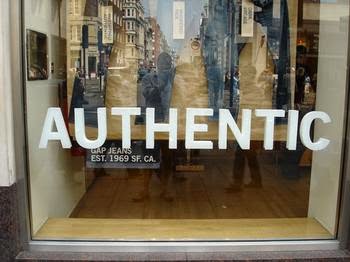Like other professionals, we marketers often get caught in our own stupid jargon.
We love to sling phrases that are purely words insiders would know. GRP, reach, frequency, segmentation, touch points and on and on. B2C or B2B is a familiar way we like to describe what type of marketing we do. We might be a business that sells consumers or one that sells to other businesses. Seriously?
I am not buying it.
Marketers sell H2H: human to human.
The company that is trying to figure out how to sell its products and services to other businesses has to understand who the decision maker is on a personal level. You should be asking questions to understand what interests they have, what do we have in common and how can I build a relationship with them before trying to sell them my stuff. Social media can help if they are active on any of the platforms.
Businesses love to generalize through segmentation. How can we sell the group of people who have a certain title, in a certain industry who are of a certain size. This is really hard work doing it this way. Can you really aggregate beliefs?
I like simple.
I prefer to find one person who can influence the decision I am trying to achieve and to get to know them.
Find a creative way to meet, connect and talk about mutual interests. Build on that one-on-one experience and then gain her confidence enough so you can at some point, talk about business by invitation. But start by learning as much as you can about one individual.
Find a creative way to meet, connect and talk about mutual interests. Build on that one-on-one experience and then gain her confidence enough so you can at some point, talk about business by invitation. But start by learning as much as you can about one individual.
Two examples:
BAD: I probably get at least one LinkedIn request most days to connect with someone I don’t know. We connect and they instantly send me a sales pitch for some service they offer. They think that by connecting online, they have permission to pitch me. Sorry, it doesn’t work that way. I won’t read their pitch and I put them into automatic ‘time out’. I don’t want anything to do with someone who hasn’t earned my trust. It would be like being at a dinner party and having people come up to you to sell you insurance. Sorry, not interested.
VERY GOOD: The other example, is that rare individual who connects with me on LinkedIn. They send me a note saying they enjoyed reading a particular blog post on a topic of interest to them. Or, they suggest a book that they think I might like to read and offer to lend me their copy. Or, they notice that I went to school in Philadelphia and we play a little game of ‘do you know’. Or, we see we have a mutual friend in common, and that person is someone we both respect for their business acumen. This is a genuine effort by someone to get to know me. They give. They don’t take.
At some point in the connection, maybe a few months in, I might ask them to tell me what type of work they do and I open the door for them to connect with me about their business. It is called permission and it comes from me to them.
How to Enter a Market
If you are trying to enter a market, think small. Really small.
Like one person at a time. Find an individual at a company that you need to engage with and figure out how to get to that one person. Use LinkedIn and common acquaintances. Go to events they will attend for your industry and introduce yourself without asking for anything. Send them a copy of a book you enjoyed that you think, based on a common and shared interest, they might also find of value. Invite them to a non-commercial activity that is close to their office and where they can hear an interesting speaker. Ask their advice on an industry issue that isn’t self-serving. Authentically try to build a relationship.
Like one person at a time. Find an individual at a company that you need to engage with and figure out how to get to that one person. Use LinkedIn and common acquaintances. Go to events they will attend for your industry and introduce yourself without asking for anything. Send them a copy of a book you enjoyed that you think, based on a common and shared interest, they might also find of value. Invite them to a non-commercial activity that is close to their office and where they can hear an interesting speaker. Ask their advice on an industry issue that isn’t self-serving. Authentically try to build a relationship.
Don’t try and sell them. Build a connection. Engage with the human being. See if you can get them to reach out to you first about business. The best business book on this topic is Daniel Pink’s TO SELL IS HUMAN.
This works. It is the opposite of how most people sell. It is all about developing relationships first, offering value and building a real connection.
If you are selling consumers, this same idea is relevant. Can you understand how your product or services supports one individual – not a large anonymous group of people? Start with one consumer at a time and see if you can understand the true benefit you provide. Have coffee with someone who buys your product to understand more about them and how your product or service fits with their life. Then meet another and then another. Take the time to have an in depth relationship with several current or potential customers. It is a really valuable way to spend your time.
Build a relationship with one person at a time before trying to scale your marketing efforts.
Be human.
Be human.





Love the example of Linkedin generic request. I have the same approach. One thing I like about linkedin is it does not say how many connection you actually have once you are past 500+. So many people have alternative motives and are just looking for the connection. That is not the point of social sites or professional sites -if you can’t add value later on what is the point to the connection now or later? Communication is often losing out to the instant world we live in today. Thanks for the insight Jeff.
Ted, thanks for your comments. I agree that human communications is suffering from the great speed by which we do everything.I’m a big fan of slowing down and trying to be present in the moment. I start each day sitting for 15 minutes in silence – in meditation. It helps remind me to slow down in everything I do.
I’m still a work in process but silence is a powerful way to keep my balance. Cheers to you.